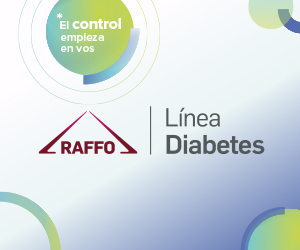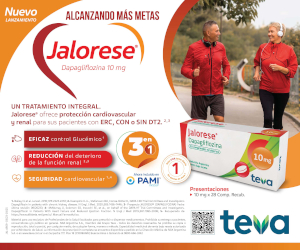A practical guide to request humoral autoimmunity markers and genetic tests in diabetes mellitus
DOI:
https://doi.org/10.47196/diab.v56i2Sup.531Keywords:
genetic, autoantibodies, classification, clinical diagnosisAbstract
Diabetes mellitus (DM) is a heterogeneous disease, with diverse clinical phenotypes, all with hyperglycemia. Historically, four factors have been used to identify this diversity: the age at onset, the severity of the disease, that is, the degree of loss of beta cell function and insulin resistance, and the presence of circulating autoantibodies.
Currently, the parameters used to classify the different types of DM make it difficult to diagnose and treat patients. The different clinical manifestations require an accurate diagnosis to achieve an effective therapeutic approach through the use of immunogenetics and clinical biochemistry.
This practical guide aims to accurately classify the often uncertain clinical presentations within the two main types of diabetes.
References
I. Adler A, Bennett P, Colagiuri-Chair S, Gregg E, et al. Reprint of classification of diabetes mellitus. Diabetes Res Clin Pract 2021;108972.
II. Cerrone GE, Valdez S, Poskus E, Frechtel GD. Bases inmunogenéticas de la diabetes autoinmune: aplicación a la fisiopatología, clínica y tratamiento. Fisiopatología molecular y clínica endocrinológica. 2015. Editores: R. Calandra, M. Barontini. Eli Lily.
III. Thomas NJ, Jones SE, Weedon MN, Shields BM, Oram RA, Hattersley AT. Frequency and phenotype of type 1 diabetes in the first six decades of life: a cross-sectional, genetically stratified survival analysis from UK Biobank. The Lancet. Diabetes & Endocrinology 2018;6(2):122-129.
IV. Genuth SM, Palmer JP, Nathan DM. Classification and diagnosis of diabetes. In: Cowie CC (Eds.) et. al. Diabetes in America. (3rd ed.), 2018. National Institute of Diabetes and Digestive and Kidney Diseases (US).
V. Sperling MA, Wolfsdorf JI, Menon RK, Tamborlane WV, Maahs D, Battelino T, Phillip M. Diabetes Mellitus, Editor(s): Mark A. Sperling, Sperling Pediatric Endocrinology (Fifth Edition), Elsevier; 2021:814-883.
VI. Wang Z, Zhang J, Xu H, Chen L, Dove A. Development and validation of a prevalence model for latent autoimmune diabetes in adults (LADA) among patients first diagnosed with type 2 diabetes mellitus (T2DM). Medical science monitor: International Medical Journal of Experimental and Clinical Research 2021;27:e932725.
VII. Valdez S, Poskus E. Autoimmune diabetes mellitus: the importance of autoantibodies for disease prediction and diagnostic support. Current Immunology Reviews 2010;6: 299-313.
VIII. Trabucchi A, Faccinetti NI, Guerra LL, Puchulu F, Frechtel GD, Poskus E, Valdez SN. Detection and characterization of ZnT8 autoantibodies could help to screen latent autoimmune diabetes in adult-onset patients with type 2 phenotype. Autoimmunity 2012; 45(2):137-142.
IX. Mauvais-Jarvis F, Sobngwi E, Porcher R, Riveline J-P, Kevorkian JP, Vaisse C, et al. Ketosis-prone type 2 diabetes in patients of Sub Saharan African origin. Clinical pathophysiology and natural history of β-cell dysfunction and insulin resistance. Diabetes 2004;53:645-653.
X. Sánchez-Caballero L, Gorgogietas V, Arroyo MN, Igoillo-Esteve M. Molecular mechanisms of β-cell dysfunction and death in monogenic forms of diabetes. International Review of Cell and Molecular Biology 2021;359:139-256.
XI. Nkonge KM, Nkonge DK, Nkonge TN. The epidemiology, molecular pathogenesis, diagnosis, and treatment of maturity-onset diabetes of the young (MODY). Clinical Diabetes and Endocrinology;2020,6(1):20.
XII. Consultado:
XIII. http://www.revistabioanalisis.com/images/flippingbook/Rev32%20n/nota1.pdf
XIV. de Dios A, López A, Frechtel G. Clínica y tratamiento de la diabetes tipo MODY. Revista de la Sociedad Argentina de Diabetes 2014;48 (3):130-138.
XV. Oliveira SC, Neves JS, Pérez A, Carvalho D. Maturity-onset diabetes of the young: From a molecular basis perspective toward the clinical phenotype and proper management. Endocrinología, Diabetes y Nutrición 2020;67(2):137-147. doi: 10.1016/j.endinu.2019.07.012.
Downloads
Published
How to Cite
Issue
Section
License
Copyright (c) 2022 on behalf of the authors. Reproduction rights: Argentine Diabetes Society

This work is licensed under a Creative Commons Attribution-NonCommercial-NoDerivatives 4.0 International License.
Dirección Nacional de Derecho de Autor, Exp. N° 5.333.129. Instituto Nacional de la Propiedad Industrial, Marca «Revista de la Sociedad Argentina de Diabetes - Asociación Civil» N° de concesión 2.605.405 y N° de disposición 1.404/13.
La Revista de la SAD está licenciada bajo Licencia Creative Commons Atribución – No Comercial – Sin Obra Derivada 4.0 Internacional.
Por otra parte, la Revista SAD permite que los autores mantengan los derechos de autor sin restricciones.


































